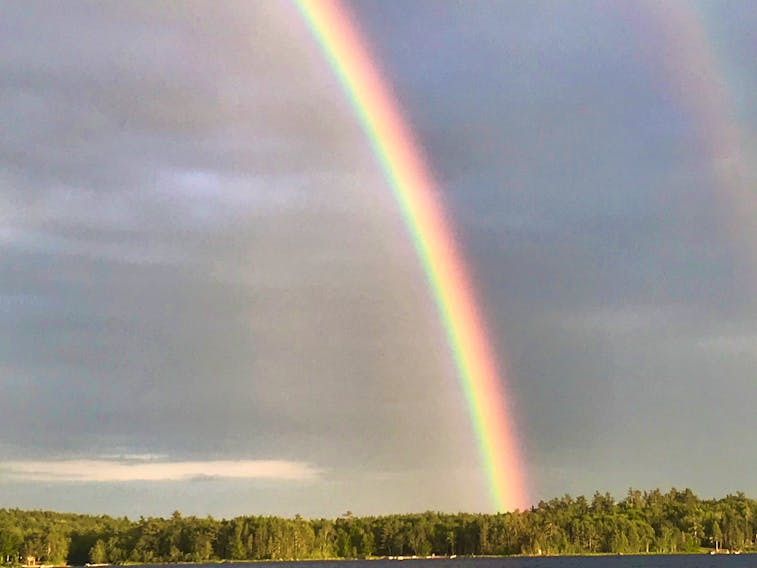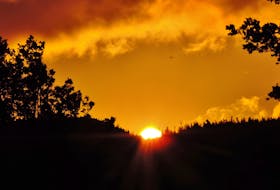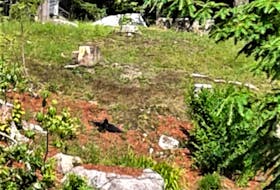While admiring a long-lasting double rainbow, Helgo Guderely couldn’t help but notice how the colours seemed to start repeating at the inner edge of the primary bow. She wondered what was going on.
These bands of colour are called Supernumerary Arcs. Supernumerary means multiple and in this case – multiple arcs of colour. These rainbows are predominantly green, purple and pink. Their numbers and spacing can change from minute to minute.
How does this happen?
It has everything to do with the size of the raindrops that are reflecting and refracting the light. In the case of a typical rainbow, there is some variation in the size of raindrops; supernumerary rainbows only form when falling water droplets are all nearly the same size.
Slightly different ray paths through a raindrop yield slightly different path lengths and slightly larger exit angles. As a result, a set of bows become visible inside the primary rainbow. When raindrops are less than 0.4mm in diameter, the spacing of supernumeraries widen as the drops get smaller.
So, where a normal rainbow goes through the visible spectrum once and leaves it at that, a supernumerary bow repeats the spectrum over and over, getting dimmer and dimmer with each repeat.
Supernumerary bows were first observed more than 200 years ago. It was found that during the creation of this optical phenomenon, sunlight doesn’t simply reflect from inside the raindrop, but it interferes – a wave phenomenon similar to ripples on a pond when a stone is tossed into the water.
Supernumerary rainbows can only be explained with waves, and their noted existence in the early 1800s was considered evidence of light's wave nature. If you’re out and about and get caught in a sun-shower, turn your back to the sun and look straight ahead – that’s where you’ll find our rainbow.
Did you know: Sir Isaac Newton
It was Sir Isaac Newton who discovered that sunlight falling on a prism could split into its component colours. This process is known as dispersion. Newton named the component colours: red, orange, yellow, green, blue, indigo and violet.
I love to receive weather questions. If you’re curious about something that happens in the sky, you can reach me at www.weatherbyday.ca
“The important thing is not to stop questioning. Curiosity has its own reason for existing.”
― Albert Einstein
- Want more weather information? Visit your weather page.
- Have a weather question, photo or drawing to share with Cindy Day? Email [email protected]
Cindy Day is the chief meteorologist for SaltWire Network









